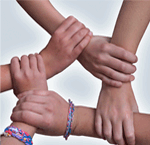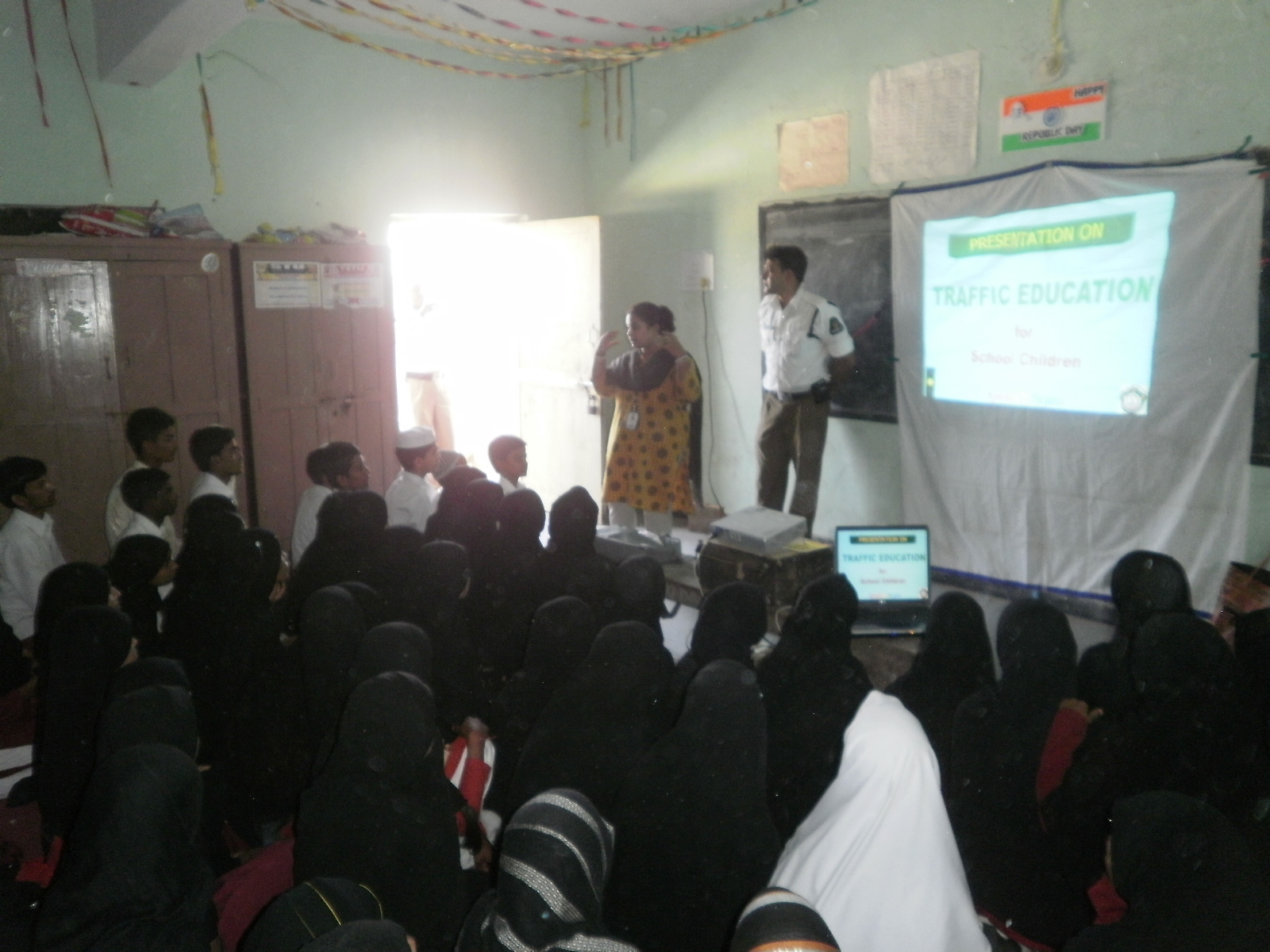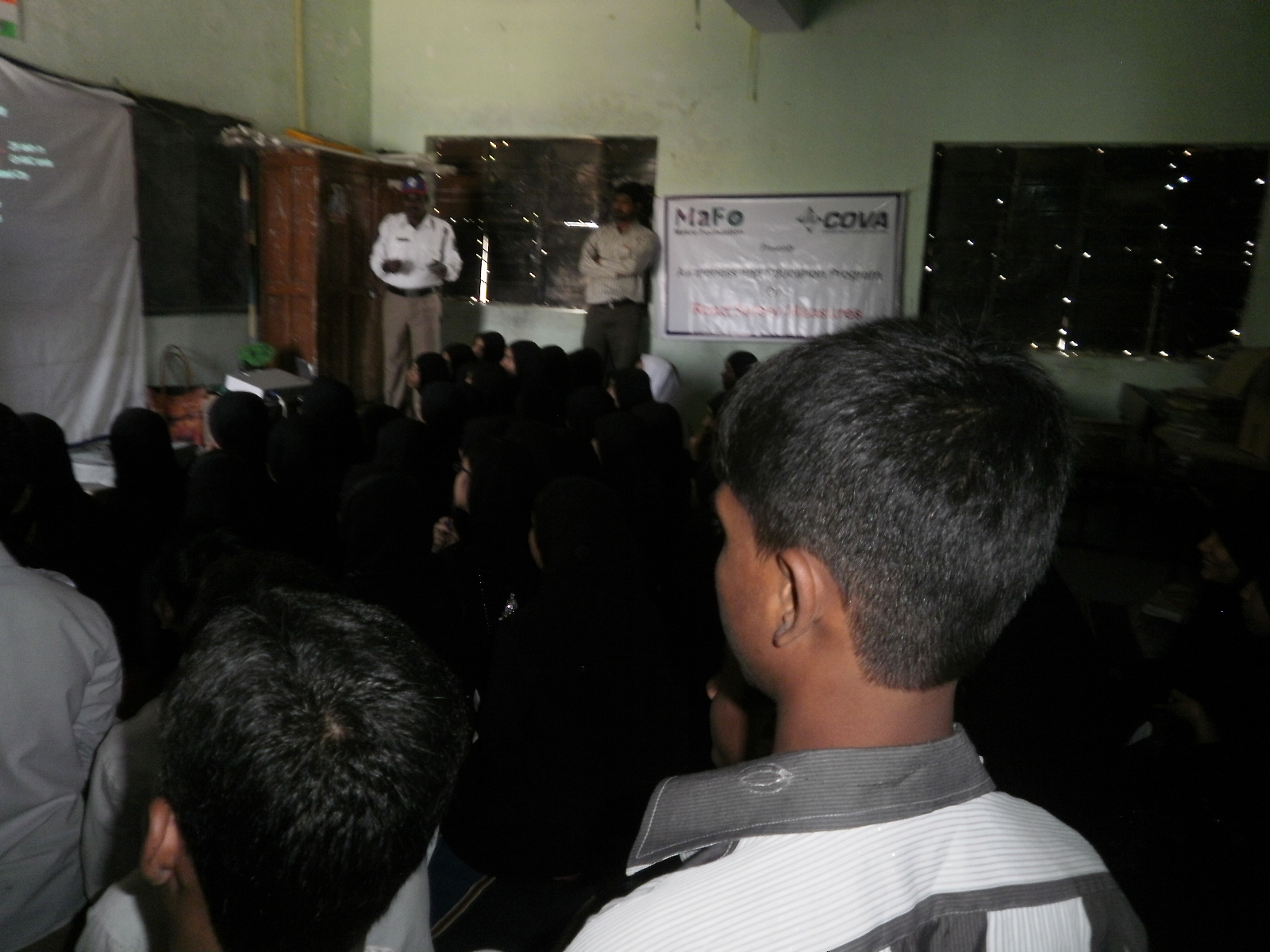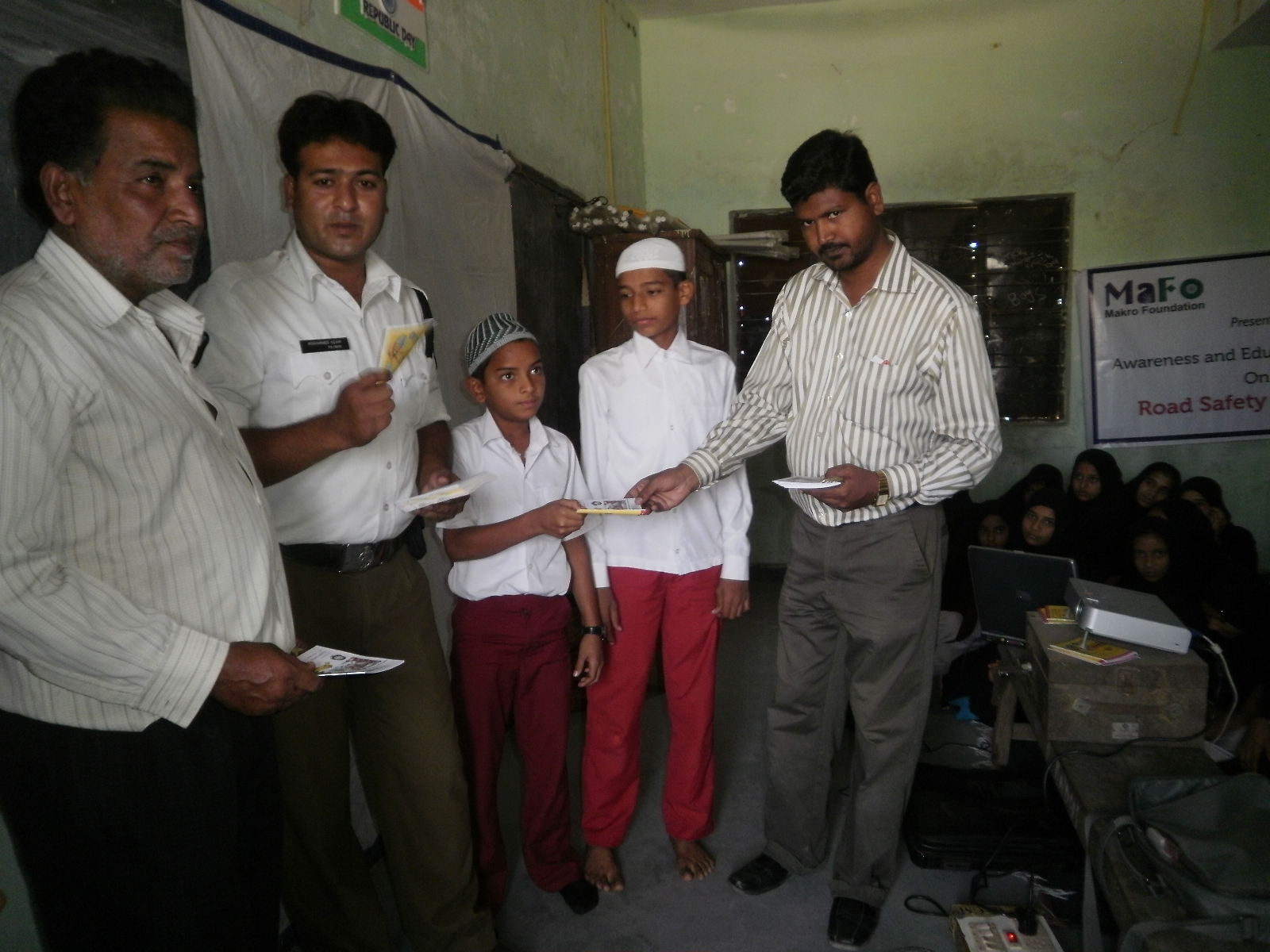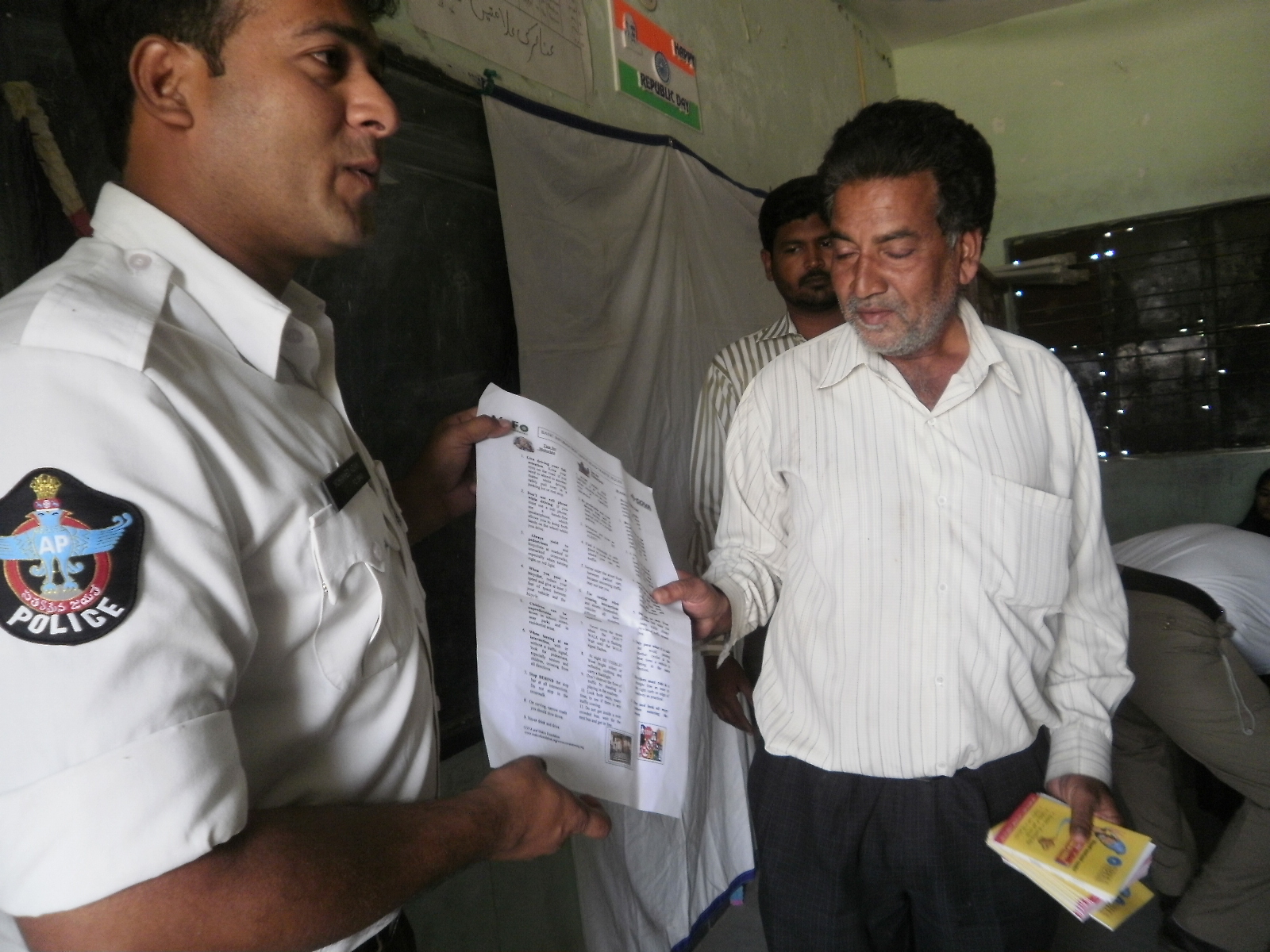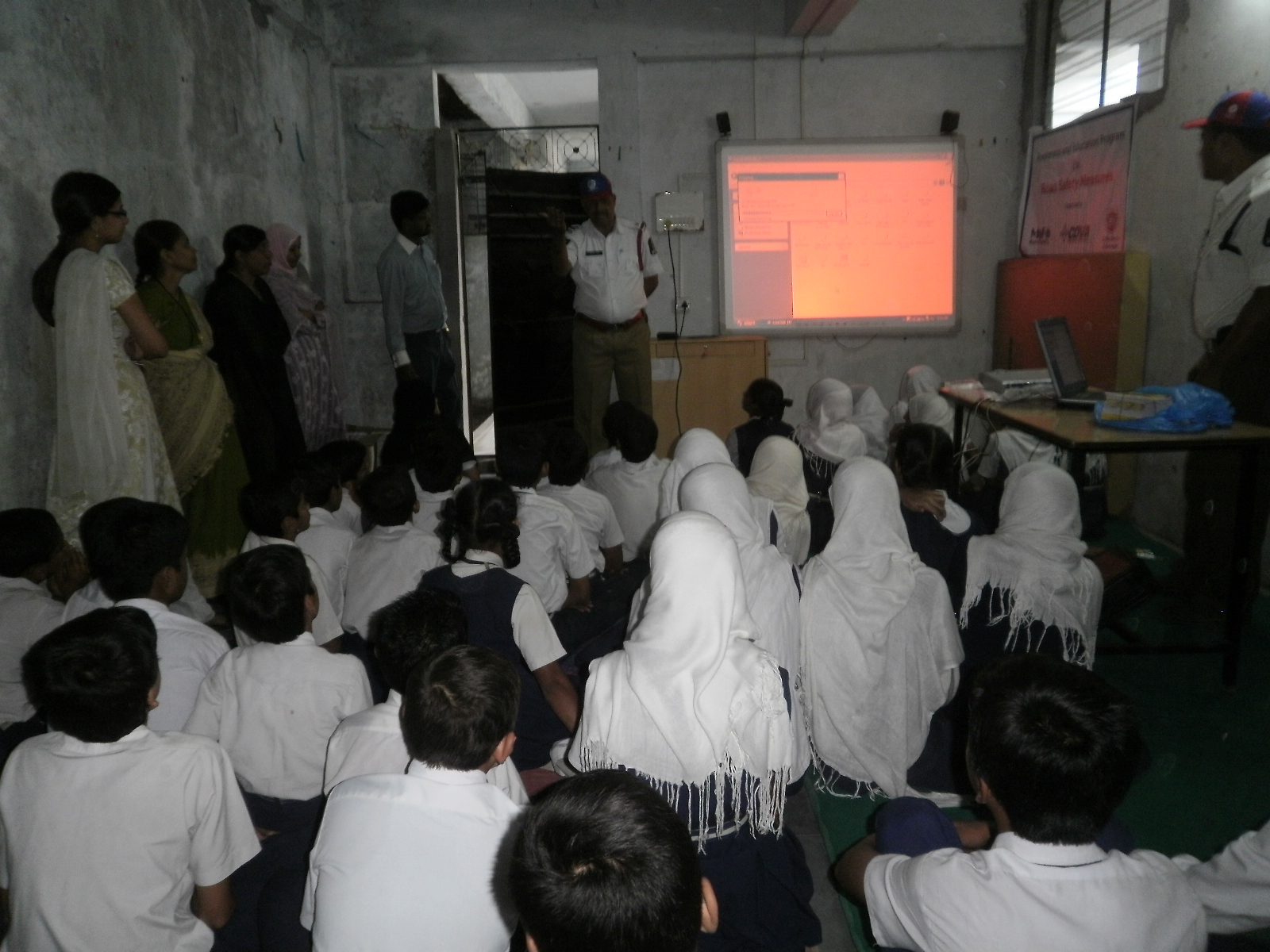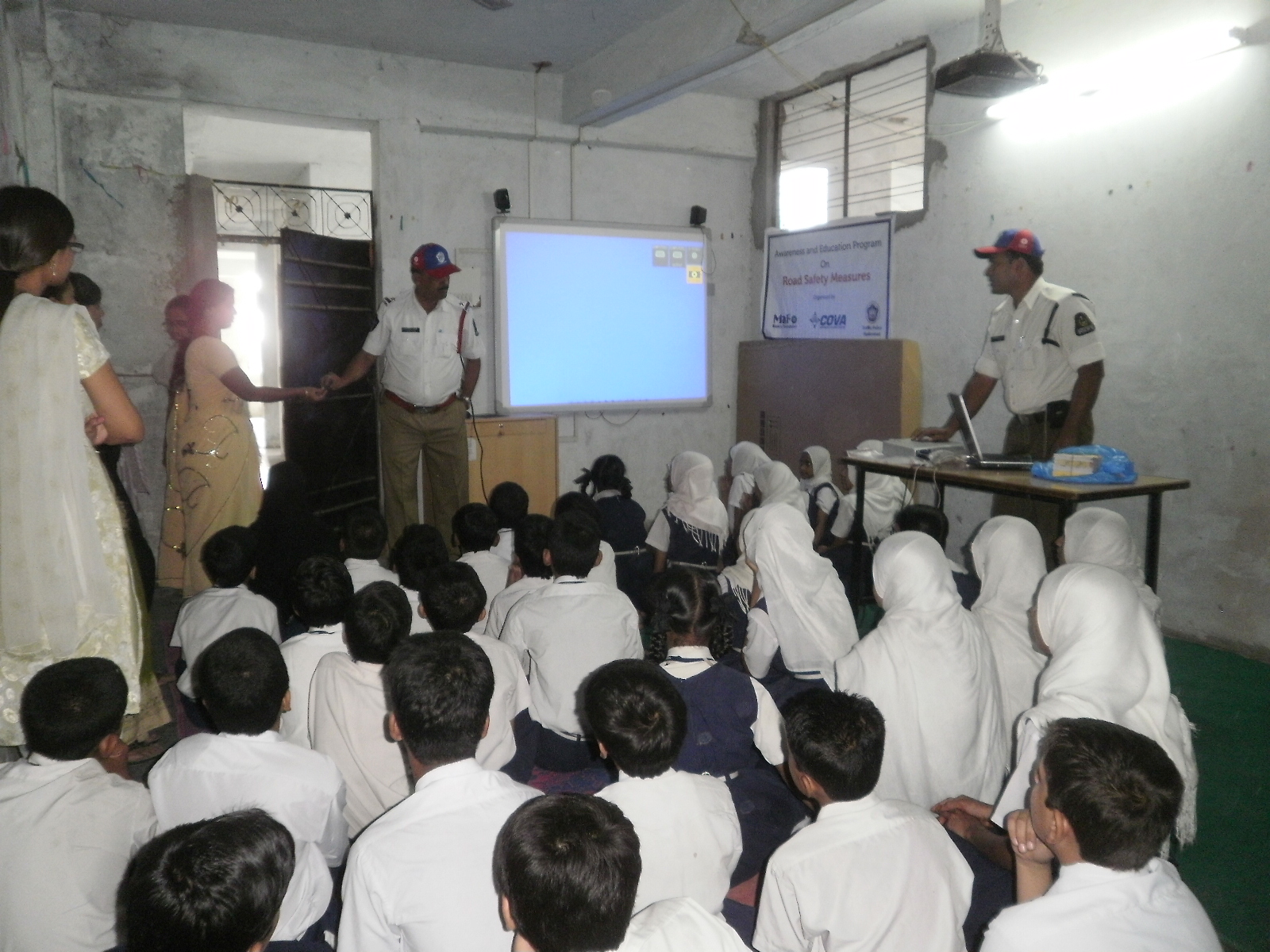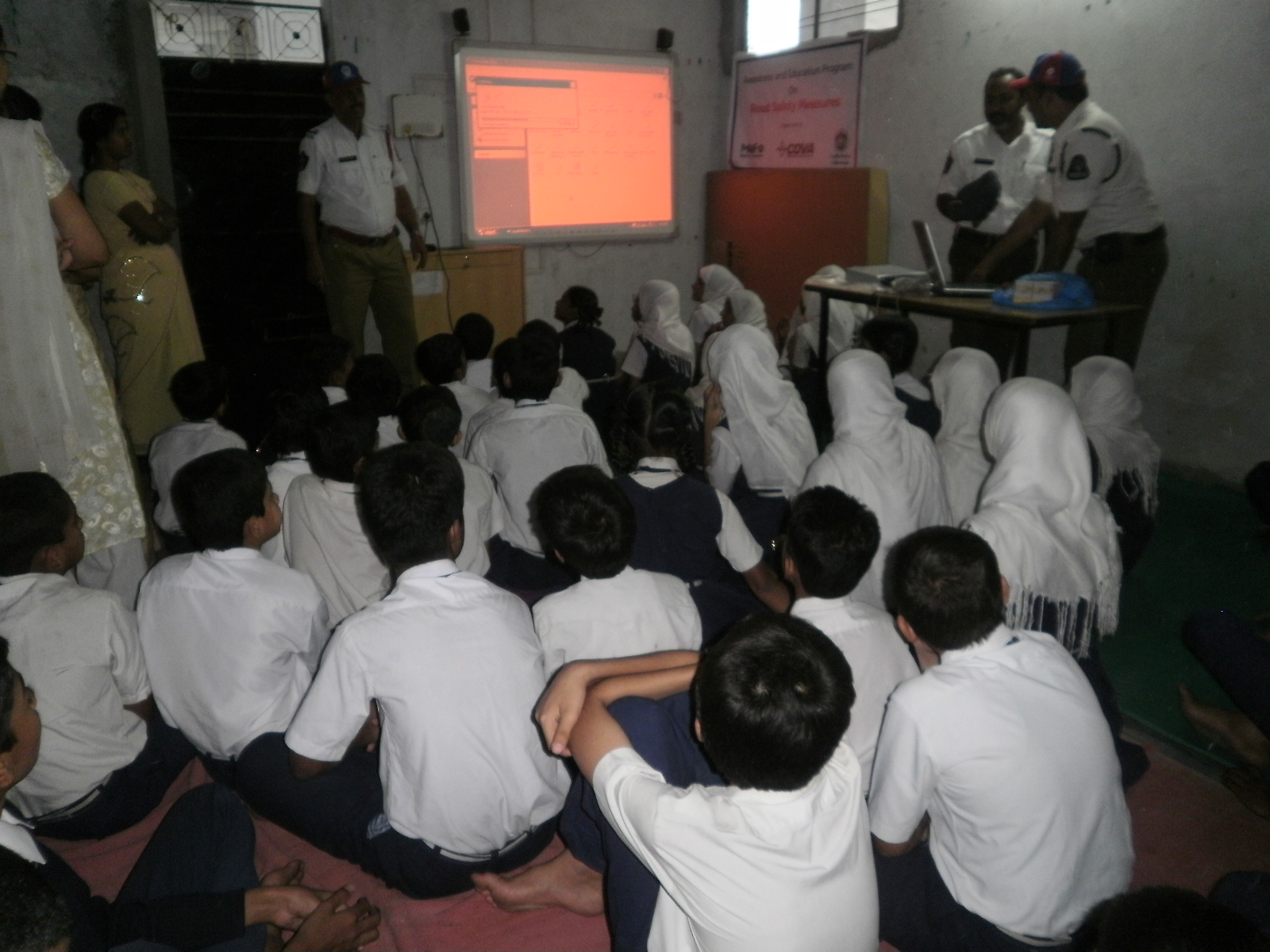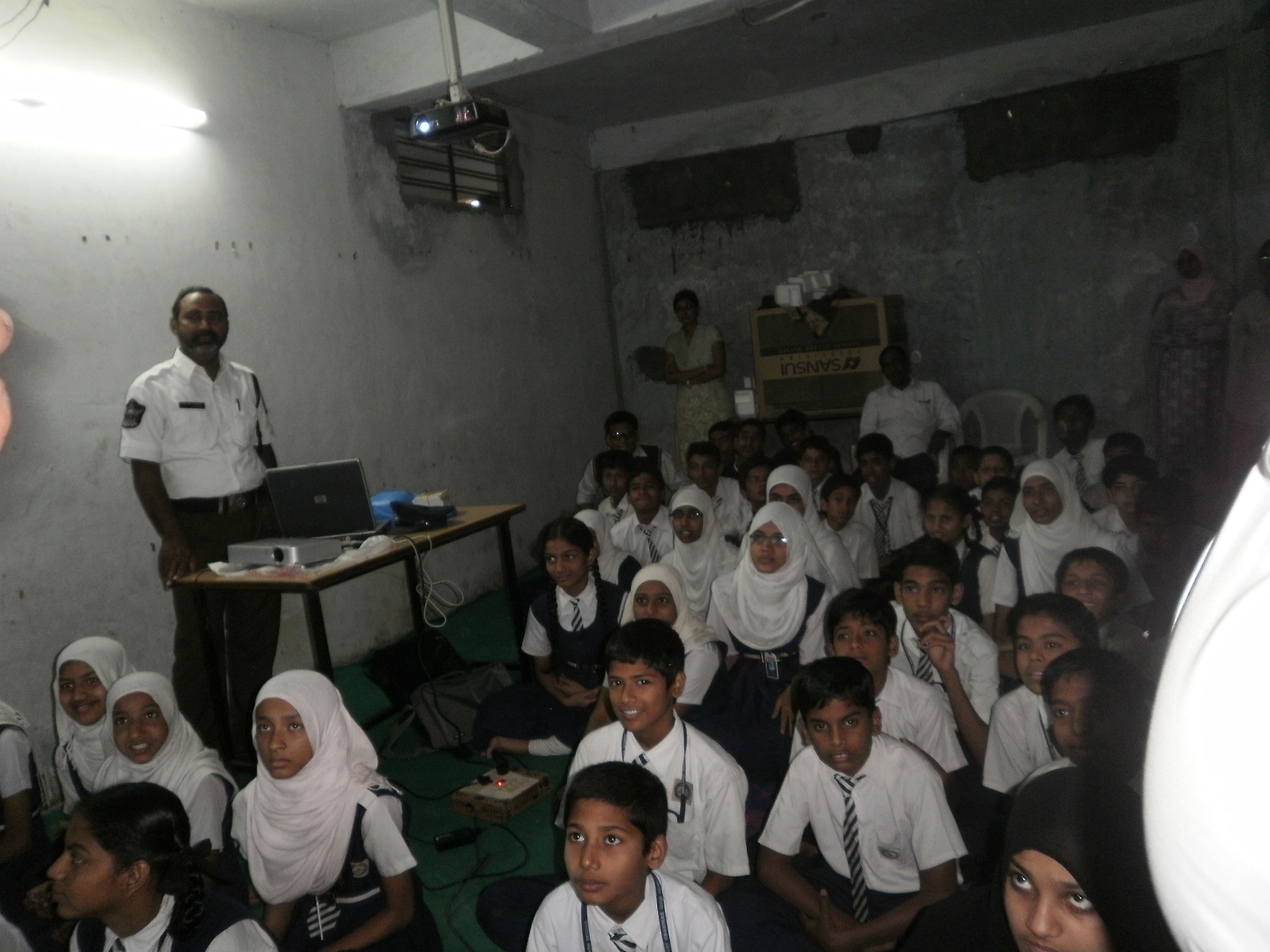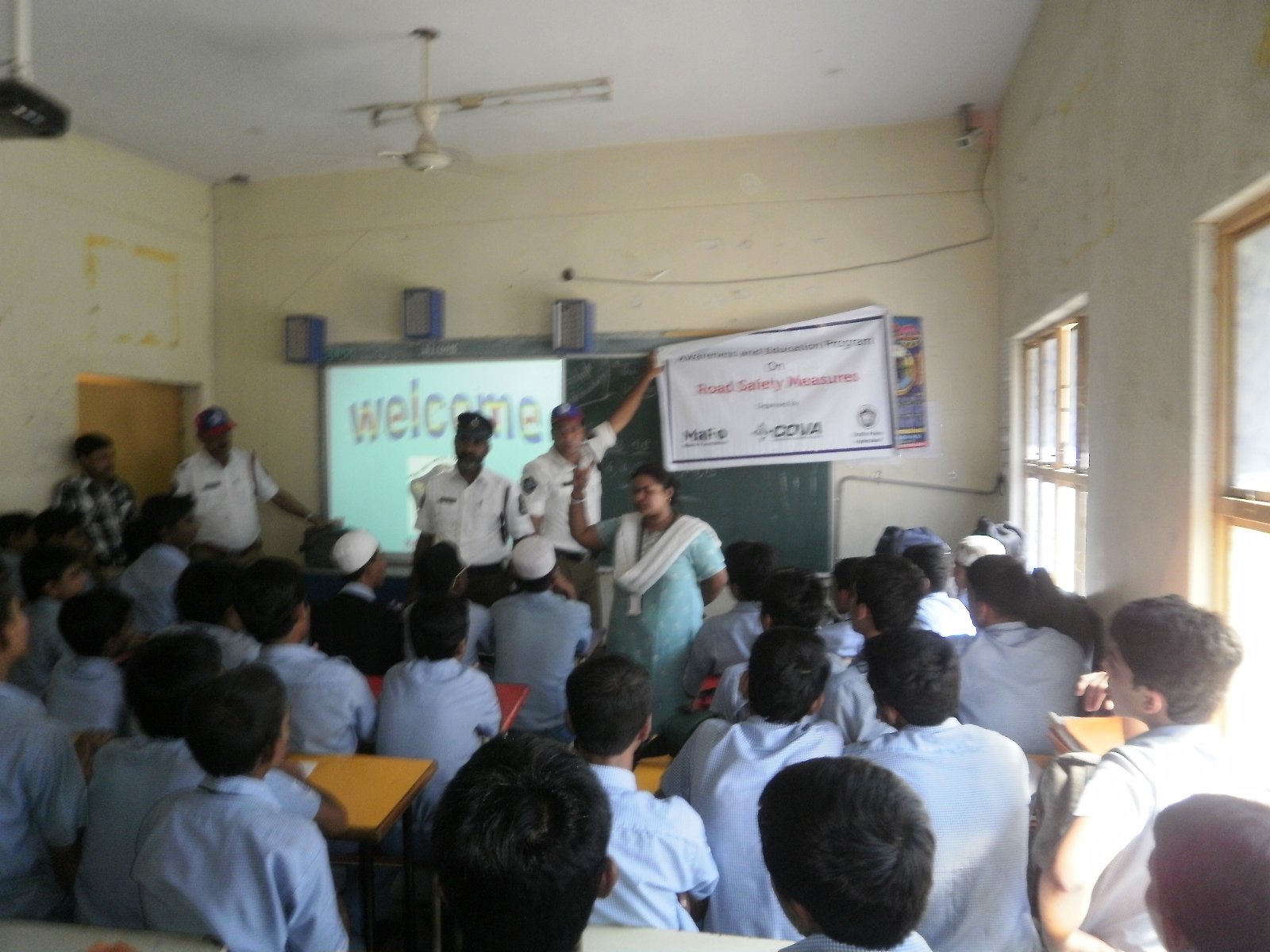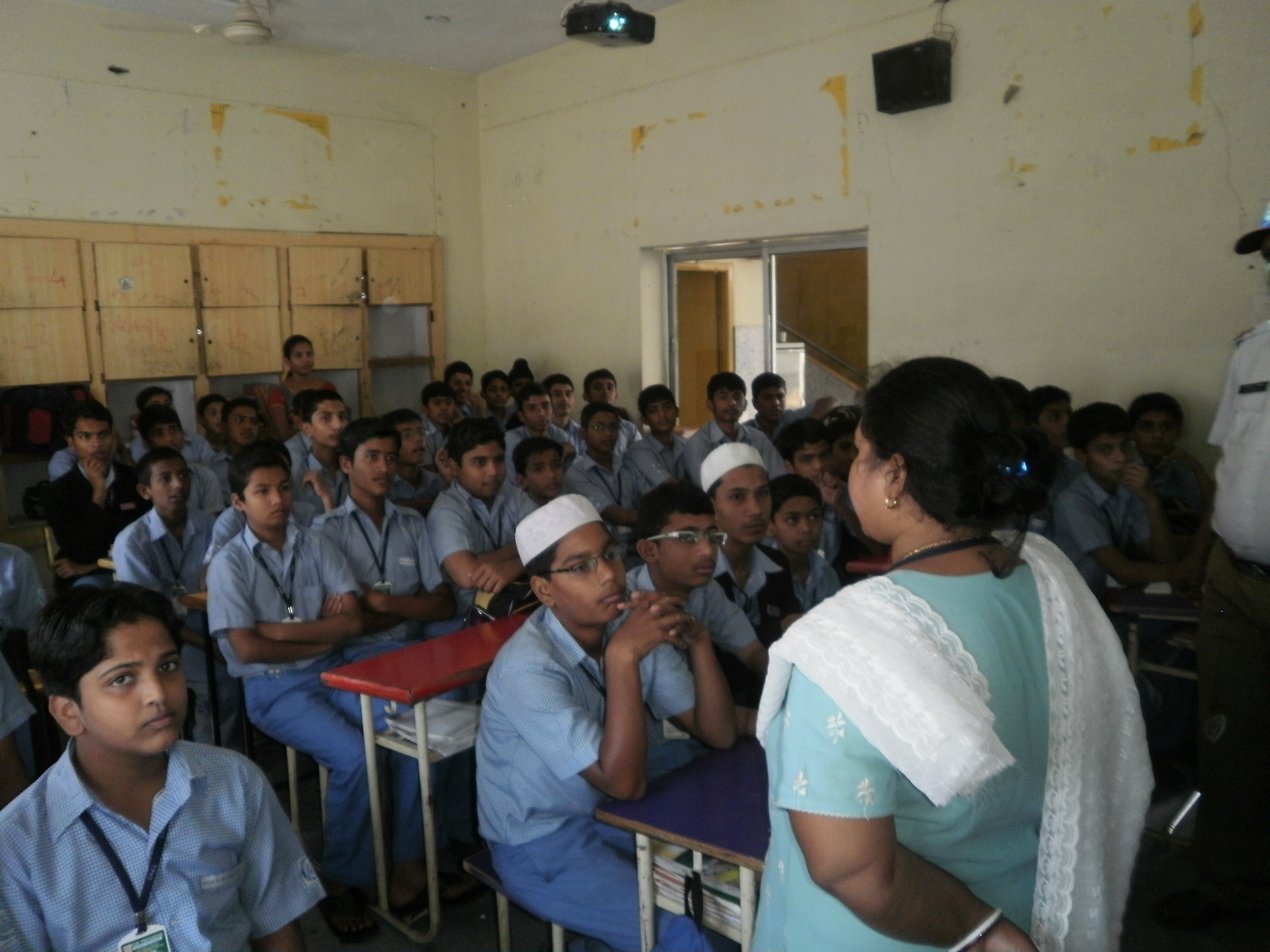|
First aid is the provision of initial care for an illness or injury. It is usually performed by a non-expert person to a sick or injured casualty until definitive medical treatment can be accessed. Certain self-limiting illnesses or minor injuries may not require further medical care past the first aid intervention. It generally consists of a series of simple and in some cases, potentially life-saving techniques that an individual can be trained to perform with minimal equipment.
The basic aims of first aid are:
- To save life
- To protect the casualty from getting more harm
- To reduce pain and Priorities of Casualty Treatment
Accident rate and ‘golden hour’:
The major cause for death below fourty years of age in the world population is road traffic accidents. Hence it is called pandemic of twenty first century. The Indian R.T.A. rate is six percent of the total world rate, even though the total number of vehicles in Indian roads is one percent of the total world number. R.T.A. death rate in India is double that of the developed world.
IMMEDIATE REQUIREMENT
Critical four minutes: One of the most common causes of a road accident death is due to loss of oxygen supply. This is mostly caused by a blocked airway. Normally it takes less than four minutes for a blocked airway to cause death.
The ‘golden hour’: The first hour after the trauma is called the ‘golden hour’. If proper first aid is given, road accident victims has a greater chance of survival and a reduction in the severity of their injuries. The chart of deaths occurring after road traffic accidents can be grouped into three peaks. First peak of deaths occur immediately after the accidents.
The major reason for death in this group is head injury. It is usually non preventable.
- The second peak of deaths occurs within first four hours after the accidents. This period is called `Golden hour’. The main cause of death in `Golden hour’ is blood loss.
- The third peak of deaths occurs three weeks after the accidents. This is due to multi organ failure. This has to be treated in the hospitals.
- If we can give correct first aid and shift the patient to the optimum hospital as early as possible; then we can reduce three fourths of R.T.A. deaths and can also improve the quality of life obtained after the treatment completion of accident victims.
2. ‘Control’ at the accident site
First of all, the care providers or volunteers should protect themselves from getting injured at the accident site.
- Then, off the `ignition’ of the involved vehicle.
- Abstain from carelessly throwing lighted cigarettes or other ignitable materials at the accidents site. Otherwise it may ignite the spilled fuel from the vehicle and produce major fire.
- The accident victims should be removed from the vehicle to a safer place by slowly removing the heavy objects fallen on their body instead of pulling them.
- If there are more volunteers at the accident site, then we should take their help also instead of doing everything by ourselves.
- We may send some volunteers to inform the police, ambulance, the hospital where we are going to carry the victims and relatives of the victims by phone.
3.‘Triage’ and order of the first aid
- When many persons are involved in an accident, they are sorted by an expert and are given different color cods according to the order of priority in which they are to be shifted to the hospitals. This is called ‘triage’.
- The victims who are to be shifted immediately to the hospital are given red, second priority victims are given yellow and the persons who may be shifted at a later time are given green color codes.
- Dead persons are given white and the persons who are very serious but will not survive even after shifting them to the hospital are given pink color code.
- The first aid provided to the accident victims are conducted in the order of A, B, C or airway, breathing, circulation, bandage, splintage, and transport.
4. First aid for `breathing’
- First step in the R.T.A. first aid is examination of the airway.
- Placing fingers in front of the nostrils checks the breathing. If breath air flow is absent, examine the mouth and nose to check for any obstructing objects such as loose artificial dentures, mud etc.
- If the bones of the face are broken, place the `airway’ that makes a passage for the air from outside to enter in to the lungs.
- If the air is not entering the lungs after the airway is kept, pierce the trachea with five or six large bore injection needles to let the air in.
- Next examine the breathing, by observing the chest movements or by using Stethoscope. If the victim is not breathing; give artificial respiration by `mouth to mouth’ breathing. This is given by making the victim lie on the floor and then extend the head of the victim and open the mouth by holding on the jaw.
- Keep a towel in front of the mouth of the victim. The provider takes deep breath and then exhales to the mouth of the victim by placing his mouth over the towel. This is repeated twelve times in a minute.
5. First aid for `circulation’ Next examine the `circulation’ or the functioning of the heart and blood vessels. Usually palpating the `pulse’ assesses the heart function.
- Usually `radial pulse’ is palpated to assess the heart function.
- This is palpated by placing three fingers just below the front of the wrist, on the side of the thumb of the victim and the volunteers thumb on the back.
- Feel for the repeated elevations of the three fingers.
- If the radial pulse is not available; look for carotid pulse. This is felt by placing the fingers of the provider in the upper part of the neck, just below the corner of the jaw. If this is also impalpable; then it can be concluded that heart is not beating sufficiently. If the heart is not functioning sufficiently, artificially squeeze the heart from outside for sending the blood to entire body and this is called `cardiac massage’. For this; make the victim lie on a firm place and place the heel of the palm one above another on the lower part of sternum. Keeping the elbow and wrist straight, press the chest by giving force from the shoulder so as to press down the chest to one and half inches.
- This is repeated seventy two times in a minute.
- In children use one hand so as to press down the chest to one inch and in infants use two fingers so as to press down the chest to half an inch.
- Cardiac massage is continued till the functioning of the heart returns or up to half an hour.
- Once the heart starts functioning; Place the patient in the side position or in the `recovery’ position. If both the heart beating and respiration are absent give the ‘cardiac massage’ and ‘mouth to mouth breathing’ in the ratio of 30:2, which means 30 ‘cardiac massages’ followed by two ‘mouth to mouth breathings’.
- Next, search the body to identify bleeders. If the bleeding is occurring from the limbs, keep them elevated to reduce the blood flow. After that, give `pressure bandage’ by using pads and tie them with pressure.
- ‘Tourniquet’ or tying the limbs with rope may produce further damage to the limbs and hence must be avoided.
6. Rapid examination and fluid `shock’
- Examine the head, eyes, nose, ears, chest, abdomen, pelvis and limbs to detect wounds, contusions etc.
- Ask the victim to move the toes, fingers and the limbs to check their movements or function. With the help of two volunteers keep the victim on the side position, identify the wounds on the back and check the tenderness behind the center of neck and vertebral column.
- These examinations are to be done with in two minutes.
- Fractures in the pelvic bones may produce oozing of blood to the abdominal cavity.
- This may cause death. Hence such a victim has to be shifted immediately to the hospital. A condition called `shock’ develops; when more than forty percent of the whole body blood is lost due to multiple bone fractures, deep wounds or pelvic bone fractures.
- The feeble pulse, cold and pale skin, fast and shallow breathing and loss of consciousness are the signs of the `shock’. In such a stage; the legs should be elevated to shift the blood to the vital body parts like brain.
- At the accident site; penetrating objects should not be removed from the body of the victim because it may cause death due to internal bleeding. Bandage, splinting and transport.
- Cover the all the significant wounds by using pads and bandages. The abnormal movement in the chest and breathing difficulty due to fractures of many ribs can be reduced by strapping the chest with cloth. If the abdominal viscera went outside the abdomen due to wounds, relocate it to the abdominal cavity and cover the abdomen with clean cloths.
- Use splints in the case of fractures to prevent further damage to the near by tissues, blood loss, pain and edema.
- Umbrella etc. may be used as splints to immobilize the fractures by tying them around the fractured limbs.
- A square shaped cloth may be folded to form a `triangular sling’. This is used for immobilizing upper limb fractures. A fractured lower limb may be immobilized by tying it to the uninjured lower limb with the help of four cloths.
- The possibilities for vertebral fractures are high, if there is tenderness behind the center of the neck.
- If the neck moves in such a victim, spinal cord may be damaged by the fractured vertebral column to produce paralyses of the limbs. Hence in such persons, the neck should be immobilized using hard cervical collar. If there is tenderness on the back of the center of chest or abdomen, the victim should be shifted to the ambulance by four persons like a `log of wood’ or without bending the victims body.
Matters related to the hospitals The decision to shift to the respective hospital is made after considering the financial status of the victim and the type and seriousness of the injuries.
- If the treatment for the specific injuries of the victim are available, it is better to shift to the near by hospital.
- The head injuries patients are to be shifted to a hospital were C.T. Scan and Neurosurgeon is available.
- This should be carried within 6 hours to a hospital with micro vascular surgical facility.
- Victims with severe muscle or soft tissue loss are to be shifted to hospitals where facilities for plastic surgery are available.
- Hand injury victims may have tendon cuts which require suturing and hence they are to be shifted to hospitals having orthopedic or plastic surgery departments.
In order to undergo anesthesia for major surgery, the patient has to abstain from taking food and drinks for six hours.
The seriously injured victims should not be given food or drinks after the accident because they may require major surgery.
After transporting the victim from the accident site; instead of forsaking the victims in the hospitals, intimate their relatives, give the doctor necessary information to write the police intimation and also if necessary arrange for blood transfusion.
Priorities of Casualty Treatment : Asphyxia, Cardiac Arrest, Severe Haemorrhage (Bleeding), Other Injuries/Illnesses, Shock.
|



